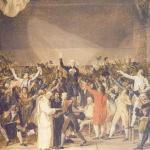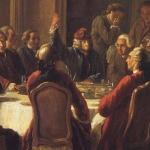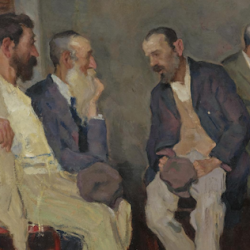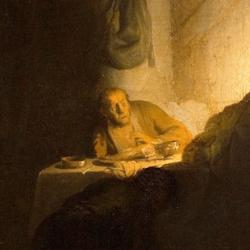Toward the end of Corpus Mysticum, Henri de Lubac says that one of the most serious results of the shifts in Eucharistic theology he examines is “the devaluation of symbols.” Augustine’s entire theology was about “signs” and “things.” In the late Middle Ages, “consideration of ‘signs’ would soon suffer an eclipse” (244).
Late medieval Trinitarian theology provides an example: “the doctrine of image and of vestiges began to be demolished. The school of Gilbert de la Poree denied it all noetic significance, already reducing it, as modern writers would, to simple comparisons. The critique that it instituted consisted in saying that these comparisons are without interest from the moment when it becomes impossible to extract any proof from them” (244). Rational demonstration or nothing!
The Porretans were mild rationalists by comparison with those who came later, denying the Trinity itself in the name of reason. They were “enthusiasts of reason” while the later anti-Trinitarians championed “critical reason” (244).
Both stood at some distance from “Augustinian symbolism.” Even when theologians used Augustinian comparisons they were diminished. Berengar of Venouse noted that Augustine found a “neat simile [in] bread and wine, which are so united out of many parts that single elements can no longer be distinguished or separated from each other” (245).
Nothing but an “elegant comparison.” The possibility that there is not merely a “similitude” between the bread/wine and the church has been lost; there is no “essential link” between Eucharist and Eucharistic community.
Which puts one in mind of Flannery O’Connor: If it’s only a “neat simile,” then to hell with it. I imagine O’Connor meant her comment literally; I know I do.











